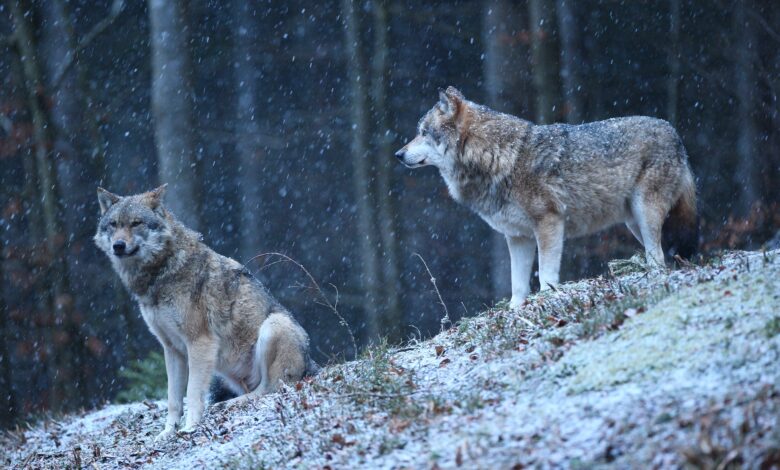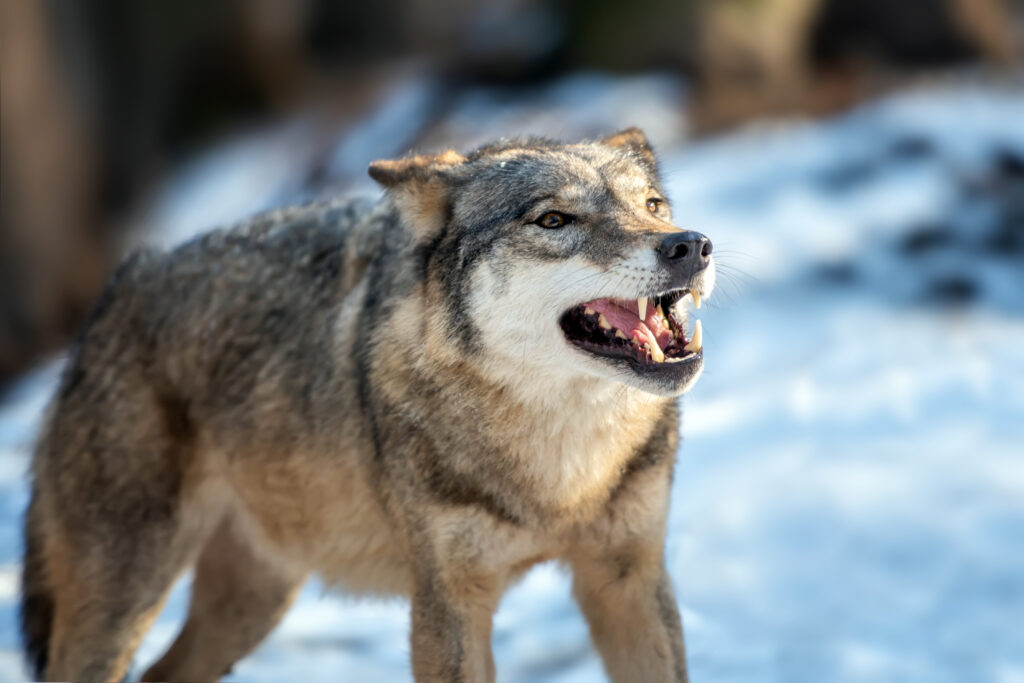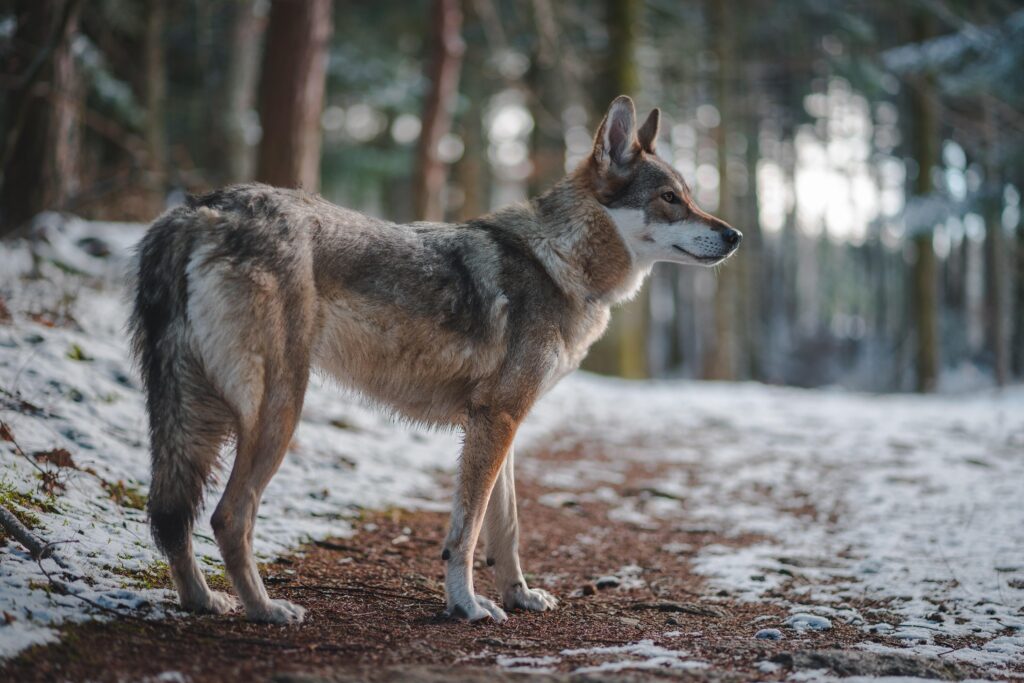The Largest Wolf: Best Majestic Apex Predator 2025

Wolves have fascinated humans for centuries, embodying both the untamed Largest Wolf wilderness and a deep social bond within their packs. Among these incredible creatures, the largest wolves stand out, both in size and in their role within the ecosystem. This article delves into the world of the largest wolves, exploring their species, characteristics, habitats, and how they have evolved to become apex predators.
1. The Largest Wolf Species: The Mackenzie Valley Wolf
The Mackenzie Largest Wolf (Canis lupus occidentalis), also known as the Northwestern Wolf, holds the title of the largest wolf species. Found primarily in Canada and Alaska, this subspecies of the gray wolf is known for its impressive size and strength.
Physical Characteristics
Mackenzie Valley Largest Wolves are massive compared to other wolf species. Males can reach up to 7 feet (2.1 meters) in length, including the tail, and stand around 3 feet (90 cm) at the shoulder. Their weight typically ranges between 100 to 175 pounds (45 to 79 kg), with some exceptional individuals reaching over 200 pounds. Their thick fur, which varies from black to gray and white, provides insulation against harsh Arctic and subarctic temperatures.
Habitat and Range
These Largest wolves are native to the northwestern regions of North America, particularly in Canada, Alaska, and parts of the northern United States. They thrive in diverse environments, from dense forests and tundras to open plains, adapting efficiently to harsh conditions.
Hunting and Diet
As apex predators, Mackenzie Valley Wolves have a diverse diet. They primarily prey on large herbivores like moose, elk, caribou, and bison. Their powerful jaws exert a bite force of over 1,000 pounds per square inch (PSI), allowing them to take down prey much larger than themselves. Wolves hunt in coordinated packs, using strategy and endurance rather than sheer speed to exhaust and overpower their prey.
2. Other Large Wolf Subspecies

While the Mackenzie Valley Wolf is the largest, other subspecies of the gray wolf also reach impressive sizes.
Eurasian Wolf (Canis lupus lupus)
The Eurasian Wolf is one of the largest wolf subspecies found across Europe and Asia. Although slightly smaller than its North American counterpart, it still reaches weights of 70 to 130 pounds (32 to 59 kg) and lengths up to 6.5 feet (2 meters). These wolves are known for their adaptability, thriving in forests, mountains, and even grasslands.
Alaskan Interior Wolf (Canis lupus pambasileus)
Closely related to the Mackenzie Valley Wolf, the Alaskan Interior Wolf also boasts large sizes, with some individuals exceeding 150 pounds (68 kg). This subspecies inhabits Alaska’s interior regions and preys on similar large ungulates like caribou and moose.
Hudson Bay Wolf (Canis lupus hudsonicus)
The Hudson Bay Wolf is another large subspecies native to Canada. Though slightly smaller than the Mackenzie Valley Wolf, it still reaches impressive sizes, weighing between 80 to 120 pounds (36 to 54 kg). These wolves are known for their striking white or light-gray fur, which helps them blend into snowy landscapes.
3. Evolution and Adaptations of Large Wolves

Wolves have evolved over thousands of years to become formidable predators, and their size plays a crucial role in their survival.
Why Are Some Wolves Larger Than Others?
Wolf size largely depends on geographical location and climate. Larger wolves are typically found in colder regions, following Bergmann’s Rule, which states that animals in colder climates tend to be larger to conserve body heat. This explains why the largest wolves, like the Mackenzie Valley Wolf, are native to North America’s northernmost regions.
Physical Adaptations
- Powerful Limbs: Larger wolves have stronger limbs, allowing them to chase down and overpower large prey.
- Dense Fur Coats: Thick fur provides insulation against freezing temperatures, helping them survive in harsh winters.
- Stronger Jaws and Teeth: Their powerful bite force enables them to crush bones and tear through thick hides.
4. The Role of Large Wolves in the Ecosystem
Wolves, especially large ones, play a crucial role in maintaining ecological balance. As apex predators, they regulate prey populations, preventing overgrazing and ensuring the health of ecosystems.
Impact on Prey Populations
By hunting weak and sick animals, wolves help control deer, moose, and elk populations, ensuring only the strongest individuals reproduce. This prevents habitat destruction caused by overpopulation and allows vegetation to regenerate.
Influence on Other Predators
Wolves also influence other predators by competing for food. Their presence can regulate populations of smaller predators like coyotes, maintaining a balanced food chain.
5. Conservation and Threats to Large Wolves
Despite their strength and adaptability, the largest wolves face several threats due to human activities.
Habitat Loss
Expanding human settlements, deforestation, and industrial activities have reduced the natural habitats of wolves, forcing them into smaller territories and leading to increased conflicts with humans.
Hunting and Poaching
Wolves have long been hunted due to their perceived threat to livestock. While conservation efforts have improved their numbers in some regions, illegal hunting and poaching still pose a significant risk.
Climate Change
Global warming is altering wolf habitats, affecting prey availability and pushing wolves into unfamiliar territories, where competition with humans and other predators increases.
6. Fascination with the Largest Wolves in Culture
Wolves, particularly the largest ones, have been a source of inspiration in mythology, folklore, and popular culture.
Wolves in Mythology
Many cultures revere wolves as symbols of strength, loyalty, and intelligence. In Norse mythology, the massive wolf Fenrir is feared as a beast destined to bring chaos during Ragnarok.
Wolves in Modern Media
Films, books, and television often depict wolves as both terrifying and majestic creatures. From Jack London’s “White Fang” to modern wildlife documentaries, the largest wolves continue to captivate audiences worldwide.
Conclusion: The Legacy of the Largest Wolves
The largest wolves, especially the Mackenzie Valley Wolf, stand as symbols of nature’s power and resilience. Their size, strength, and hunting prowess make them one of the most fascinating predators in the animal kingdom. However, their survival depends on conservation efforts, responsible wildlife management, and coexistence with humans.
As we continue to learn more about these majestic creatures, it becomes crucial to protect their habitats and ensure that future generations can witness the grandeur of the world’s largest wolves in the wild.



